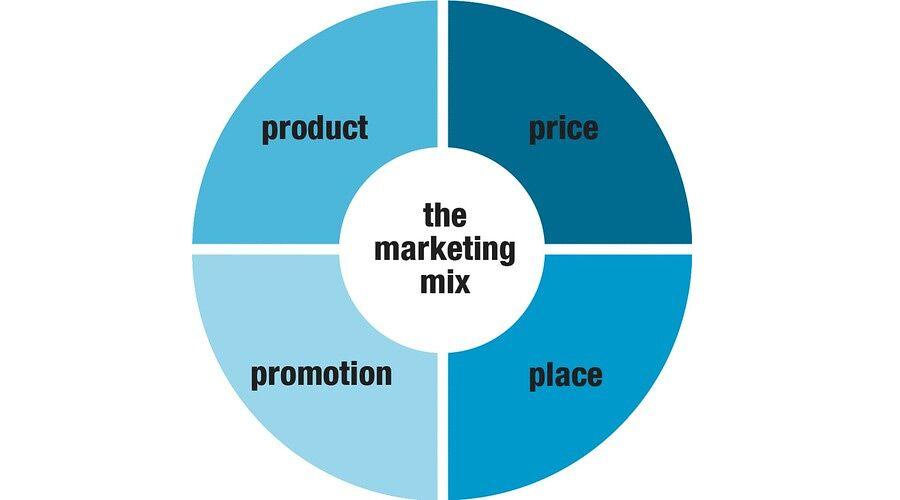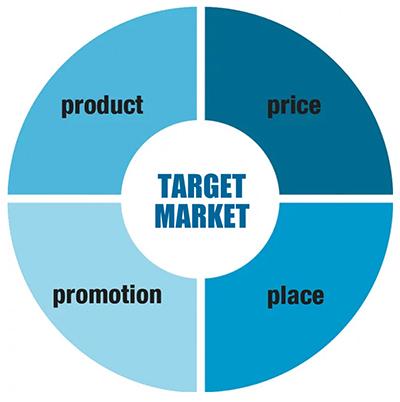Welcome too our latest blog post, where we delve into the world of marketing strategy with insights drawn from the popular YouTube video titled “.” In today’s fast-paced marketplace, understanding the fundamentals of the marketing mix is essential for any brand aiming to resonate with its audience. From Product to Price, Place, Promotion, People, Process, and Physical Evidence—the 7Ps framework provides a comprehensive approach to crafting effective marketing strategies.In this guide, we’ll break down each element, explore how they interconnect, and discuss their impact on your overall marketing success. whether you’re a seasoned marketer or just starting your journey, this exploration will equip you with the knowledge needed to navigate the complexities of the marketing landscape with confidence. Let’s get started!
Table of contents
- Understanding the 7Ps Framework in Marketing Strategy
- Creating Compelling Products That Meet Consumer Needs
- The Power of Pricing: Strategies for Competitive Advantage
- Enhancing Brand Presence Through Effective Promotion Techniques
- Q&A
- Future Outlook
Understanding the 7Ps Framework in Marketing Strategy

The 7Ps framework is a fundamental model that aids businesses in crafting effective marketing strategies by breaking down their offerings into seven key components: Product, Price, Place, Promotion, People, process, and Physical evidence. Each element plays a vital role in shaping customer perceptions and can significantly influence purchasing decisions. By understanding and strategically aligning these Ps with customer needs, brands can create a more compelling value proposition. As an example, the Product must not onyl meet the quality expectations of the market but should also feature necessary enhancements that resonate with the target audience. Similarly, the Pricing strategy should reflect the perceived value of the product while remaining competitive within the marketplace.
Moreover, Place emphasizes the importance of distribution channels that ensure product availability to the end consumer. Effective Promotion leverages various communication methods to engage potential customers, raising awareness and driving interest.The human aspect, encapsulated in the People element, reflects the importance of customer service and the impact of staff interactions with clients.The Process highlights the procedures involved in delivering the product or service efficiently, while Physical evidence includes the tangible aspects that customers encounter, reinforcing the brand’s quality and reliability. this comprehensive approach empowers marketers to refine their strategies, ensuring a seamless and rewarding customer experience.
| Element | Description | Key focus |
|---|---|---|
| Product | The goods or services offered to meet consumer needs. | Quality, features, design |
| Price | The amount charged for the product or service. | Affordability, perceived value |
| Place | The channels through which the product is distributed. | Accessibility, location |
| Promotion | The methods used to communicate and advertise the product. | Awareness, engagement |
| people | The individuals involved in the service delivery. | Customer service, interaction quality |
| Process | The procedures for delivering the product or service. | Efficiency, consistency |
| Physical Evidence | The tangible aspects that represent the product. | Branding, packaging |
Creating Compelling Products That Meet Consumer Needs

In today’s competitive marketplace,understanding the evolving demands of consumers is paramount. Crafting products that resonate with their preferences involves keen insights into both functionality and emotional appeal. to achieve this, consider the following factors that not only influence consumer choices but also enhance their overall experience:
- User Experience: Products should be intuitive and easy to use, ensuring consumers feel empowered.
- Quality: High-quality materials and craftsmanship build trust and satisfaction.
- Innovation: Stay ahead of trends by introducing unique features or improvements that address specific needs.
- Brand Story: A compelling narrative around the product fosters connection and loyalty among consumers.
Once these elements are established, it’s crucial to regularly gather feedback and adapt offerings accordingly. This iterative approach creates a feedback loop where consumer insights inform product refinement. Below is a simple table illustrating how product adaptations can be prioritized based on consumer feedback:
| Feedback Type | Adaptation Priority | Example Actions |
|---|---|---|
| Functionality issues | High | Revise design, enhance usability |
| Desired Features | Medium | Add new functionalities, improve specs |
| Sustainability Concerns | Medium | switch to eco-amiable materials |
| Cosmetic Feedback | Low | Revamp packaging or aesthetics |
The Power of Pricing: Strategies for Competitive Advantage

Effective pricing strategies can serve as a pivotal lever for businesses seeking to carve out a competitive edge in today’s crowded marketplace. Dynamic pricing, as a notable example, allows companies to adjust their prices in real-time based on demand, competition, and customer behavior. Additionally, employing psychological pricing tactics, such as pricing something at $19.99 instead of $20, can significantly influence consumer perception and boost sales. By understanding the value proposition of their offerings and aligning it with customer expectations, businesses can create pricing models that reflect both perceived value and market conditions.
Another essential aspect of pricing for competitive advantage involves segmenting the market effectively. This could mean tailoring prices based on different customer demographics or purchasing behaviors. Implementing bundling strategies, where products or services are packaged together at a lower price than if purchased separately, can also enhance perceived value and customer satisfaction. To illustrate these concepts, the table below provides a comparison of various pricing strategies and their potential impacts:
| Pricing Strategy | Impact |
|---|---|
| Dynamic Pricing | Increases revenue during peak demand |
| Psychological Pricing | Enhances sales through perception of savings |
| Market Segmentation | Caters to different customer needs, boosting loyalty |
| Bundling | Improves customer satisfaction and value perception |
Enhancing Brand Presence Through Effective Promotion Techniques
To elevate your brand’s presence, embracing a well-rounded promotional strategy is essential in today’s competitive marketplace. Utilizing a blend of customary and digital mediums can significantly amplify your reach. Key tactics include:
- Social Media Engagement: Regularly interact with your audience across platforms to foster community and trust.
- Content Marketing: create valuable content that resonates with your target demographic, helping to establish your authority in the industry.
- email Campaigns: Craft personalized messages that keep your audience informed and engaged with your brand.
- Influencer Collaborations: Partner with influencers to tap into their loyal followings and extend your brand’s visibility.
Moreover, leveraging data analytics can definitely help optimize your promotional efforts. By tracking engagement metrics, you can identify which strategies yield the best results and adjust accordingly. It’s also beneficial to explore targeted advertising options, allowing you to reach specific audiences who are most likely to convert. Consider utilizing:
| Advertising Type | Benefits |
|---|---|
| Social Media Ads | High engagement and targeted reach. |
| Search Engine Marketing | Captures users actively seeking products. |
| Email Newsletters | Direct communication to engaged customers. |
Q&A
– Q&A
Q1: What are the 7Ps of the marketing mix?
A: The 7Ps of the marketing mix are Product, price, Place, Promotion, People, Process, and Physical Evidence. Each element plays a crucial role in crafting an effective marketing strategy,allowing businesses to engage their target audience successfully.
Q2: Can you briefly explain each of the 7Ps?
A: Absolutely! Here’s a quick rundown:
- Product: This refers to what you’re selling, including the quality, features, branding, and even the packaging.
- Price: This encompasses your pricing strategy and how it positions your product in the market relative to competitors.
- Place: This is about where your product is sold and how it’s distributed to the end user.
- Promotion: This includes all marketing communications—advertising, public relations, social media, and more.
- People: This refers to everyone involved in the service process, from employees to customers, emphasizing customer interaction.
- Process: This element covers the way in which your service or product is delivered to the customer, ensuring efficiency and satisfaction.
- Physical Evidence: This involves any tangible elements that can support your service offering, such as brochures, branding, and the physical environment where the service is delivered.
Q3: Why is the 7Ps framework important for marketers?
A: The 7Ps framework provides a comprehensive approach to developing marketing strategies. By considering all seven elements, marketers can ensure they address every aspect of the customer experience, enhancing satisfaction and loyalty, ultimately driving sales.
Q4: how can businesses implement the 7Ps effectively?
A: Businesses can implement the 7Ps by conducting thorough market research to understand their audience and competitive landscape.Setting clear objectives for each element can help in aligning strategies; for example, differentiating the product, determining an appealing price, selecting the right distribution channels, and crafting effective promotional campaigns.
Q5: Can the 7Ps be adapted for different industries?
A: Yes, the 7Ps can be tailored for various industries. As an example, service-based businesses may place greater emphasis on People and Process, while product-based companies might focus more on Product and Place. Adapting the framework to meet specific industry needs or trends can enhance its relevance and effectiveness.
Q6: Is there a specific order in which to address the 7Ps?
A: there is no strict order to address the 7Ps, as they are interrelated. However, starting with Product often makes sense, as it sets the foundation for Pricing, Promotion, and the other Ps. the focus should be on achieving a balanced approach that considers all elements.
Q7: How frequently enough should businesses reevaluate their 7Ps?
A: Businesses should regularly review their 7Ps, ideally on an annual basis or more frequently if they experience significant changes in the market or customer behavior. Staying adaptable and responsive to new trends or competition is vital for sustained success.
Q8: Are there any common mistakes to avoid when using the 7Ps?
A: Yes, some common pitfalls include neglecting the People and Process elements, underestimating the importance of Physical Evidence, and failing to adapt to market changes. Businesses should ensure to keep all 7Ps aligned and relevant to their audience’s needs.
Q9: How dose the 7Ps framework fit into a larger marketing strategy?
A: The 7Ps framework is a foundational element of a larger marketing strategy. It works hand-in-hand with other concepts such as market segmentation, targeting, and positioning. A strategic approach that integrates the 7Ps can result in a more cohesive and effective marketing plan.
Q10: Where can I learn more about the 7Ps of the marketing mix?
A: Besides this guide,various online resources,marketing courses,and books delve deeper into the 7Ps of the marketing mix. Additionally, the YouTube video titled “” is a great starting point to visually comprehend the concepts discussed.
With the knowledge of the 7Ps at your fingertips, you’re well-equipped to navigate the marketing landscape confidently!
Future Outlook
mastering the 7Ps of the marketing mix is not just a strategic advantage; it’s essential for navigating today’s dynamic market landscape. Whether you’re a seasoned marketer or just starting out, understanding Product, Price, Place, Promotion, People, Process, and Physical Evidence can profoundly influence your business outcomes. By harmonizing these elements, you create a cohesive strategy that resonates with your target audience, ensuring that your brand stands out amidst the competition.
As we unpacked in our video,the real magic lies in the seamless integration of these components to build a holistic marketing approach. Each ‘P’ has its own unique role,yet they work best when combined thoughtfully. We hope that this guide has provided you with valuable insights and actionable takeaways to fuel your marketing efforts.
Thank you for joining us on this exploration of the 7Ps. If you found the facts helpful,don’t hesitate to share your thoughts in the comments below. Let’s keep the conversation going—what strategies have you found prosperous in utilizing the marketing mix? Until next time, keep innovating and pushing the boundaries of your marketing strategies!



